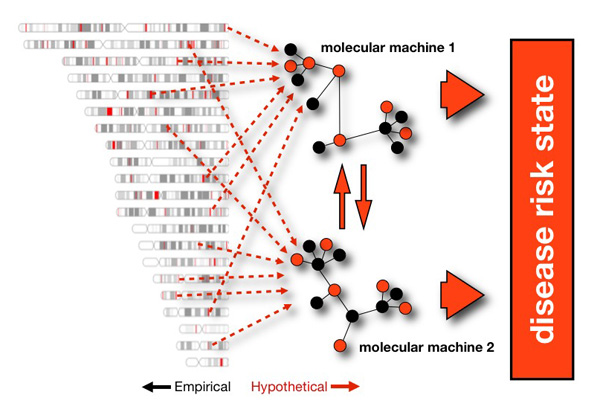The SUN Project
Decoding the genomics of schizophrenia: DNA to molecules, cells, & functions
Psychiatric genomics has achieved unprecedented advances. We now possess extraordinary new knowledge about the fundamental genetic architectures. To date 100+ loci meet consensus criteria for significance and replication in human genetics. These exceptional advances give us multiple starting points from which to understand the fundamental biology of schizophrenia. Our hypothesis is that multi-component networks mediate risk for schizophrenia
Our overarching goal is to increase knowledge of the molecular basis of schizophrenia.
The many genes that are conveying risk for schizophrenia might act together at the cellular level by encoding proteins in common pathways or acting in the same ‘molecular machine’ (see figure). The central idea of the SUN project is to use this data on human genetic variation and translate it to mechanisms acting at the cellular, for instance synaptic, level.
The coordinator Prof. Patrick Sullivan (Karolinska Institutet, Sweden & UNC, USA) has initiated this project. Together with several of his team members, the CNCR CTG, FGA and MCN labs are part of the project.
For these efforts we carefully selected an exceptional team with profound expertise in population studies, statistical analyses, proteomics, and functional analysis and cell biology of neurons.
Advanced technologies are a requirements for this project. In particular we are using cellomics, unique neuronal autaptic synaptic assays and frontier neuroproteomics tools .
